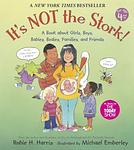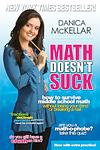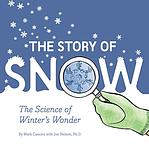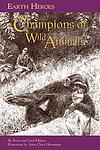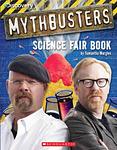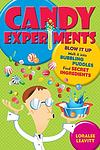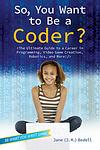The Greatest "Nonfiction, Children's books" Books Since 2000
Click to learn how this list is calculated.
This list represents a comprehensive and trusted collection of the greatest books. Developed through a specialized algorithm, it brings together 288 'best of' book lists to form a definitive guide to the world's most acclaimed books. For those interested in how these books are chosen, additional details can be found on the rankings page.
Genres
Children's books are a category of literature that is specifically written and designed for children. These books are typically aimed at readers between the ages of 0-12 and cover a wide range of topics, from picture books for toddlers to chapter books for older children. Children's books often feature colorful illustrations, simple language, and engaging stories that are meant to entertain, educate, and inspire young readers. They can cover a variety of genres, including fiction, non-fiction, poetry, and more, and are an essential part of a child's early education and development.
Countries
Date Range
Reading Statistics
Click the button below to see how many of these books you've read!
Download
If you're interested in downloading this list as a CSV file for use in a spreadsheet application, you can easily do so by clicking the button below. Please note that to ensure a manageable file size and faster download, the CSV will include details for only the first 500 books.
Download-
1. Bathtub Science by Shar Levine
"Bathtub Science" is an engaging children's book that introduces young readers to the fundamentals of science through a series of fun, educational experiments that can be conducted using everyday items found in most homes. The book is designed to make learning interactive and accessible, encouraging children to explore scientific concepts such as density, buoyancy, and surface tension right from the comfort of their own bathrooms. Through easy-to-follow instructions and clear explanations, the book aims to spark curiosity and a love for science in young minds by demonstrating how ordinary materials can reveal extraordinary scientific principles.
-
2. Black Inventors For Children by Charles Jones
This book offers a compelling introduction to the world of African American inventors and their significant contributions to science, technology, and everyday life. It highlights the stories of brilliant minds who, despite facing racial barriers, developed groundbreaking inventions that have had lasting impacts. Aimed at young readers, the book not only educates about these important figures but also inspires creativity and perseverance by showcasing how these inventors overcame challenges to improve the world. Through engaging narratives and illustrations, children are encouraged to appreciate the diversity of innovation and the power of determination.
-
3. It's Not The Stork! by Robie H. Harris
This book serves as an educational resource for young children, providing clear and age-appropriate explanations about human bodies, family structures, love, reproduction, and childbirth. It uses engaging illustrations and simple language to help children understand the differences between male and female bodies, where babies come from, and the basics of human development and reproduction. The book aims to promote a healthy understanding of human sexuality and to answer common questions children might have about their bodies and relationships in a respectful and accessible manner.
-
4. Math Doesn't Suck by Danica McKellar
This book is a helpful guide aimed at middle school girls, offering a fresh and engaging approach to understanding math. The author, a recognized actress and mathematician, uses relatable anecdotes and easy-to-understand examples to demystify topics such as fractions, percentages, and pre-algebra. The book is designed to boost confidence in young students who may feel intimidated by math, showing them that math can be fun, accessible, and relevant to their everyday lives. It also includes puzzles, quizzes, and tips to reinforce learning and inspire a love for math.
-
5. The Story Of Snow by Mark Cassino, Jon Nelson
"The Story of Snow" provides an engaging exploration of how snowflakes are formed, detailing each stage of development from water vapor to intricate crystal. Through a combination of vivid photography and accessible scientific explanations, the book captures the beauty and complexity of snowflakes. It also offers practical guidance on how to catch and observe snowflakes, making it an educational resource that encourages both understanding and appreciation of winter's unique natural artistry.
-
6. Earth Heroes by Bruce Malnor, Carol Malnor
"Earth Heroes" is a collection of inspiring stories that highlight the lives and achievements of twenty individuals who have made significant contributions to environmental conservation. Each chapter delves into the biography of a different environmentalist, exploring their motivations, the challenges they faced, and the impact of their work on preserving the natural world. From scientists and activists to policymakers, the book showcases a diverse range of heroes who have each played a pivotal role in advocating for sustainable practices and protecting Earth's ecosystems for future generations.
-
7. Mythbusters Science Fair Book by Samantha Margles
The book serves as a practical guide for students looking to create exciting and educational science fair projects. It draws inspiration from the popular television show that tests the validity of various myths and legends, translating these into engaging experiments suitable for a science fair setting. The book provides step-by-step instructions for a variety of experiments, covering topics from physics to chemistry, and encourages critical thinking and scientific inquiry among young readers. Each project is designed to be both fun and informative, helping students understand key scientific concepts through hands-on learning and experimentation.
-
8. Candy Experiments by Loralee Leavitt
"Candy Experiments" is a fascinating book that transforms the way children view sweets by using them in a series of scientific experiments. The book encourages young readers to explore basic scientific concepts such as density, volume, and chemical reactions through fun, hands-on experiments using various types of candy. By dissolving, heating, and testing candies, children can learn about science in an engaging and enjoyable way, turning everyday treats into educational tools that spark curiosity and foster a love for science.
-
9. So, You Want To Be A Coder? by Jane Bedell
This book serves as a comprehensive guide for young readers who are interested in pursuing a career in coding. It explores various aspects of the coding profession, including different types of programming languages, essential skills for success, and the wide range of career opportunities available in the field. The book also provides practical advice on how to get started with coding, featuring interviews with professionals in the industry and step-by-step projects to help beginners practice their skills. Aimed at inspiring the next generation of coders, it is an informative resource that combines educational content with engaging activities.
Reading Statistics
Click the button below to see how many of these books you've read!
Download
If you're interested in downloading this list as a CSV file for use in a spreadsheet application, you can easily do so by clicking the button below. Please note that to ensure a manageable file size and faster download, the CSV will include details for only the first 500 books.
Download

